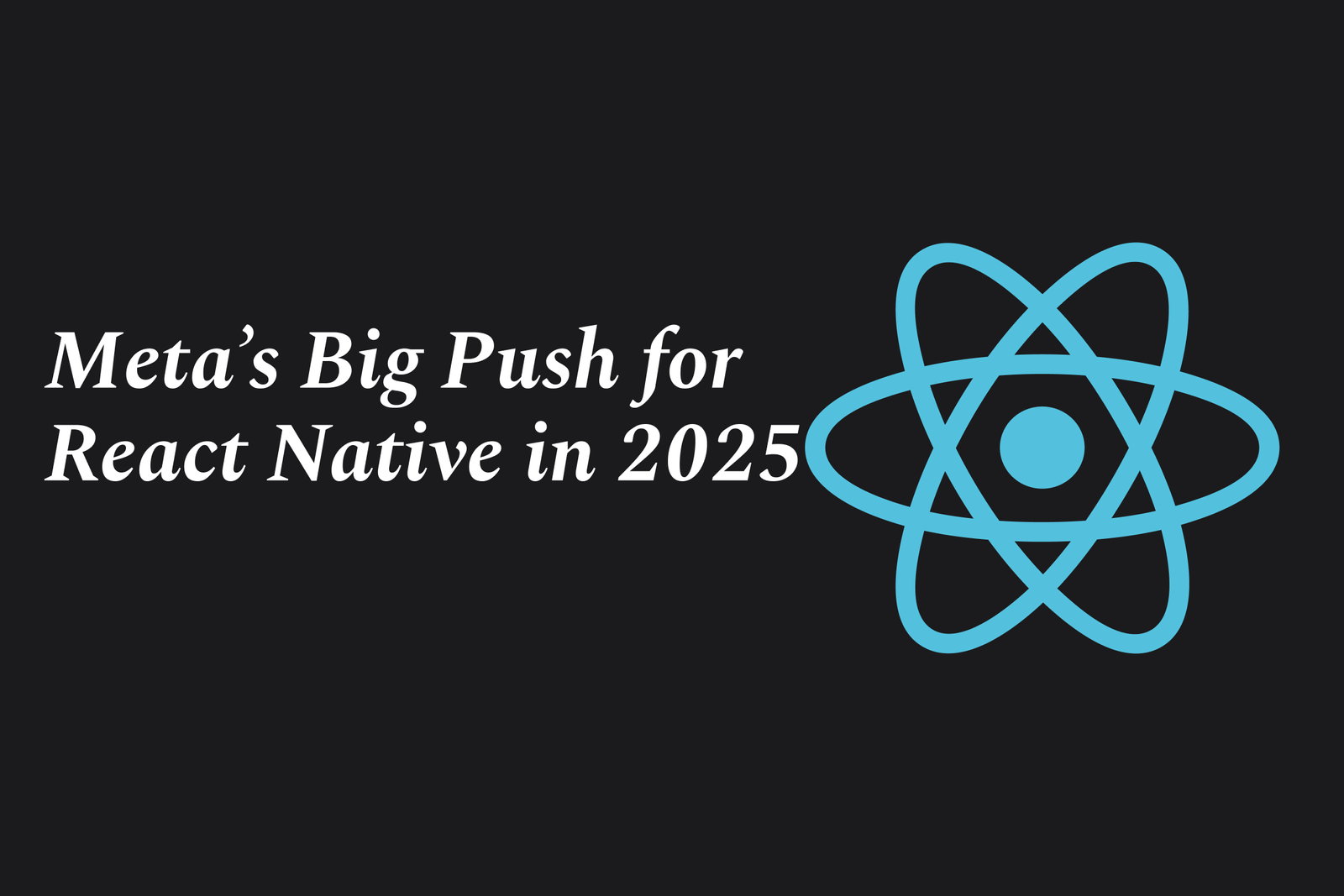Meta?S Big Push For React Native In 2025
In 2025, Meta is intensifying its focus on React Native, enhancing the framework with the latest React 19 features and freezing legacy systems to boost stability, aiming to streamline cross-platform app development and deliver faster, more efficient mobile experiences.
Meta’s Big Push for React Native in 2025
1 ) Overview of React Native in 2025
React Native remains a leading open source framework created by Facebook (now Meta) for cross platform mobile app development.
It enables developers to build mobile apps for both iOS and Android with a shared JavaScript codebase.
Despite being over a decade old, React Native continues evolving due to strong community support and Meta’s ongoing contributions.
The latest update, version 0.80, includes support for React 19.1 and freezes the Legacy Architecture to advance stability.
2 ) Primary Purpose of React Native
Designed to simplify and accelerate mobile app development by allowing code reuse across platforms.
It achieves near native performance by rendering UI components using native APIs rather than web views.
This approach reduces development time and costs compared to building separate native apps for each platform.
3 ) Advantages of React Native
Cross platform development reduces duplication of effort.
Strong community backing and continuous improvements from Meta.
Easier maintenance with a single codebase for multiple platforms.
Faster prototyping and iteration cycles.
4 ) Existing Challenges and Considerations
Some developers experience frustrations due to ecosystem fragmentation and lack of official comprehensive components.
React Native may not cover all native features perfectly, sometimes requiring native module development.
Awareness of alternatives remains necessary when specific platform capabilities or performance are critical.
5 ) React Native Alternatives
Native app development (Swift/Objective C for iOS and Kotlin/Java for Android) still preferred for highly specialized or performance critical apps.
Other cross platform frameworks exist but React Native maintains popularity according to recent developer surveys.
6 ) Meta’s Commitment and Future Direction
Meta is investing significantly in React Native’s continued development and ecosystem enrichment.
Integration with the latest React versions (React 19.x) demonstrates alignment with cutting edge React features.
Freezing legacy systems suggests a focus on modernization and reliability.
Summary
In 2025, Meta is strongly endorsing React Native as a top choice for cross platform mobile app development, emphasizing speed, code reusability, and native performance. While some challenges remain, continuous improvements, including compatibility with new React versions, and robust community support position React Native as a compelling framework for developers aiming to build efficient and scalable mobile applications.
https://justacademy.in/news-detail/flutter-and-blockchain-integration
https://justacademy.in/news-detail/react-native?s-big-leap-in-desktop-app-development
https://justacademy.in/news-detail/how-react-native-is-powering-the-future-of-smart-home-apps
https://justacademy.in/news-detail/flutter-for-embedded-systems-2025
https://justacademy.in/news-detail/best-flutter-payment-plugins-in-2025
Related Posts
Java supports GDPR and data privacy by enabling secure data handling through encryption, controlled access, and precise data management. It allows developers to minimize PII exposure, ensure data confidentiality, and design workflows that comply with data protection regulations effectively.
Java code quality tools have evolved to include advanced static analysis, integrated security checks, and AI-powered code reviews. These updates help developers detect bugs, enforce coding standards, and enhance security, streamlining the development process and improving overall code reliability.
Java remains a cornerstone in big tech companies, evolving with modern features like records, pattern matching, and virtual threads. Its robust ecosystem, enhanced performance, and growing AI integrations keep it vital for both legacy systems and innovative new projects.
Java and CI/CD pipeline optimizations streamline Java application development by automating builds, tests, and deployments. They improve efficiency through parallelization, caching, and secure secrets management, enabling faster feedback loops and more reliable, scalable software delivery.
Java supports modern cryptography standards through its flexible Java Cryptography Architecture (JCA), enabling integration of advanced algorithms like AES, EdDSA, and post-quantum tools. Libraries like Bouncy Castle offer FIPS-certified, hardware-accelerated implementations for secure development.
Java 23 enhances record patterns by enabling concise, direct destructuring of record components within pattern matching, simplifying type checks and data extraction. This improvement boosts code readability and expressiveness by reducing boilerplate in handling immutable data classes.
Java remains a top choice for mobile app backends, powering scalable, secure, and high-performance server-side solutions. Latest trends include cloud-native microservices, reactive programming, and enhanced JVM optimizations, enabling efficient, flexible, and robust mobile backend development.
Java SE 24 and LTS Java SE 21 offer enhanced features and performance, while Apache Spark 4.0.0 introduces Scala 2.13 support and advanced ML and SQL capabilities. Together, they empower developers to build scalable, high-performance data applications with modern tools.
JUnit 5 modernizes Java testing with a modular architecture, improved assertions, and seamless Java 8+ support. Beyond JUnit, tools like Mockito and AssertJ enhance mocking and assertions, creating a powerful, flexible ecosystem for writing clean, efficient Java unit tests.
Java plays a pivotal role in cloud automation tools by providing a robust, platform-independent language used to build scalable automation frameworks like Jenkins and Selenium, enabling efficient CI/CD pipelines, testing, and orchestration across diverse cloud environments.










